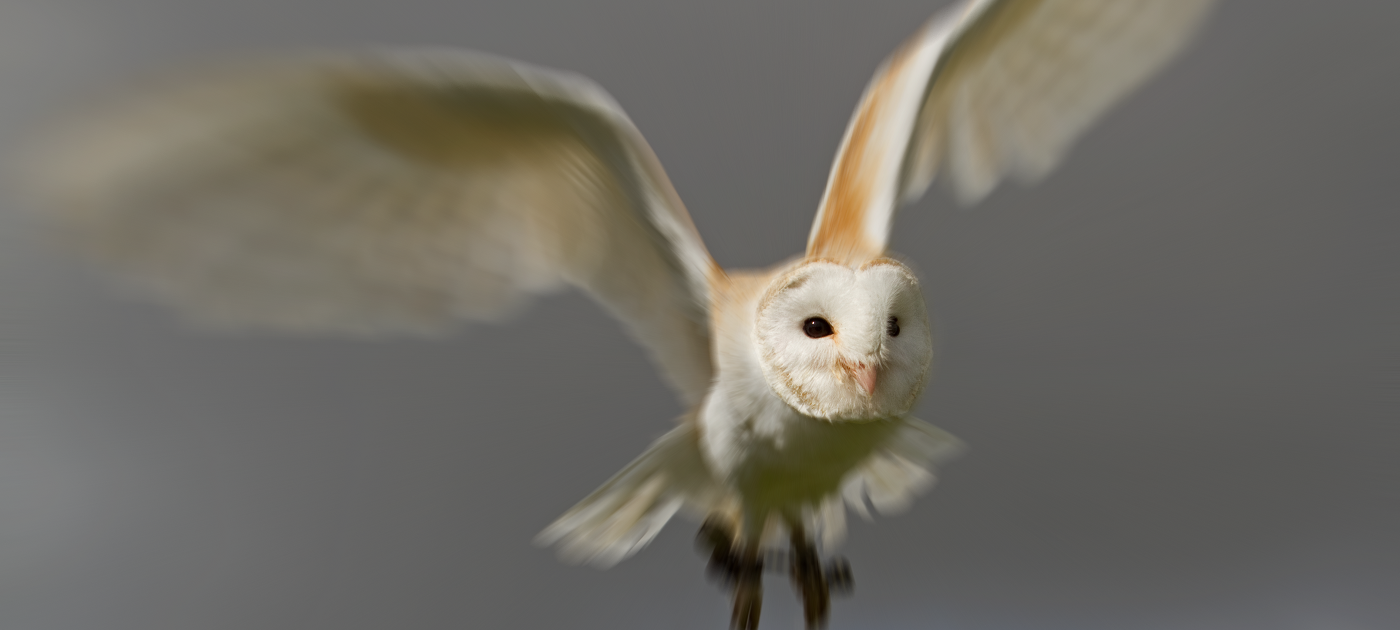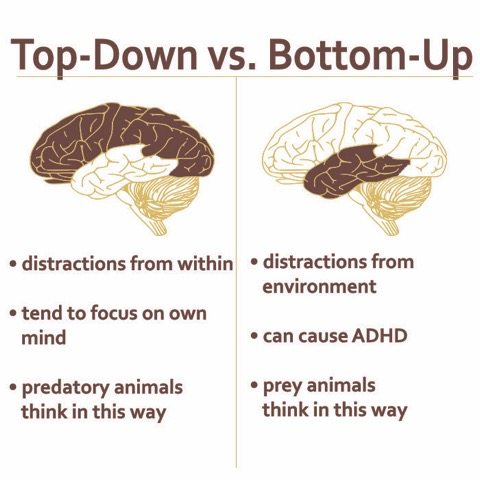In Brief:
- Scientists at Johns Hopkins University used owls to understand the brain processes that control attention
- There are two different methods of controlling attention called top-down control and bottom-up control
- Varying amounts of top-down and bottom-up control imply different behaviors and mental disorders
Think back to all of those times you got distracted and lost track of the task at hand. You were solving a math problem when you heard snippets of music coming from next door or smelled the pizza your mom ordered for dinner. You looked back at the math problem and wondered, “Where was I?”
These situations are headaches to students and adults alike. Why do we focus on certain things and ignore others? Scientists have found the answer to this question with the help of our feathered friends: owls. With their sharp attention and hearing, owls have more noticeable brain cell activity than other animals. Taking advantage of this, Dr. Eric Knudsen and other scientists of Johns Hopkins University studied two sections of an owl brain — the forebrain and the midbrain — to help further our understanding of brain processing. To do this, they presented owls with sounds and images and recorded which brain cells processed the different sounds and images.
Owls, like humans, have two different methods of controlling attention called top-down control and bottom-up control that are directed by different parts of the brain. In humans, top-down control is when an individual generates the thought on his or her own. For example, if you were watching TV and remembered that your homework was due soon, your attention would shift from watching TV to finishing your homework. This happens in the forebrain. On the other hand, when your attention is caught by something in your environment, you use bottom-up control. An example of bottom-up control is when you notice people playing outside while you’re in math class. You may choose to focus on the view from the window rather than your teacher. This occurs in the midbrain.
In Dr. Knudsen’s research, the relationship between these control methods and different parts of the brain was clarified. “If there’s something very important, [neurons in the midbrain] signal that and send it up to the forebrain. In the forebrain you have the network of what you’re actually thinking about.” says Dr. Knudsen. “We were looking at how the part of the brain that focuses on what’s going on around you interacts with the part of the brain that focuses on your goals and what you’re trying to do.”
However, not everyone has the same amount of bottom-up and top-down control. People who have more bottom-up control may have Attention-Deficit/Hyperactivity Disorder and have a tough time focusing on a task. People who have more top-down control tend to focus less on their surroundings and more on their own thoughts. In general, species who have more bottom-up control are mostly prey because they must be more cautious of their environment. Likewise, species who have more top-down control are most likely predators that out attacks in their heads. In humans, mental disorders like schizophrenia also arise when an individual cannot connect their bottom-up and top-down control.
Using Dr. Knudsen’s research and the insights gained from owl brains, these mental disorders involving top-down and bottom-up control and our own thought process can now be better understood.
Works Cited
- Garlin, Latarsha. “Owls Provide Clues on How Humans Focus Attention.” The Hub. September 11, 2014. Accessed July 2016. http://hub.jhu.edu/2014/09/11/
owls-provide-attention-clues/. - Harmening, W. M., J. Orlowski, O. Ben-Shahar, and H. Wagner. “Overt Attention toward Oriented Objects in Free-viewing Barn Owls.” Proceedings of the National Academy of Sciences 108, no. 20 (2011): 8461-466. doi:10.1073/pnas.1101582108.
- Mysore, Shreesh P., and Eric I. Knudsen. “Descending Control of Neural Bias and Selectivity in a Spatial Attention Network: Rules and Mechanisms.” Neuron 84, no. 1 (2014): 214-26. doi:10.1016/j.neuron.2014.08.
019. - “Study Provides Clues on How Humans Focus Attention.” AANS Neurosurgeon RSS. September 25, 2014. Accessed July 2016. http://v1archives.
aansneurosurgeon.org/2014/09/ 25/study-provides-clues-on- how-humans-focus-attention/.
Image Credits:
Feature Image: Photo: “Male Barn Owl 3 https://commons.wikimedia.
Story Image:
- Photo: “Barn Owl Eyes https://pixabay.com/en/barn-
owl-owl-eyes-bird-nocturnal- 344397/” by Anonymous https://pixabay.com/en/users/ mikezwei-125146/?tab=about> (Edited). License: CC0 1.0 - Image: “Brain https://pixabay.com/en/brain-
intelligence-science-mind- 312007/” by Anonymous https://pixabay.com/en/users/ Clker-Free-Vector-Images-3736/ (Edited). License: CC0 1.0
Chief Editor: Aparna Ragupathi
Creative Team Coordinator: Sreya Das
Team Editor: Yihan Wu
Team Graphic Designer: Selena Liu
This article was written by Katharine Marriott. As always, before leaving a response to this article please view our Rules of Conduct. Thanks! -cSw Editorial Staff

